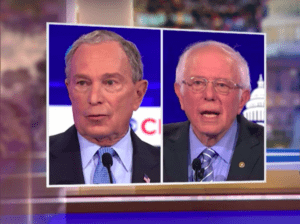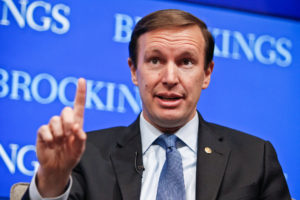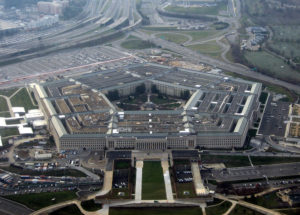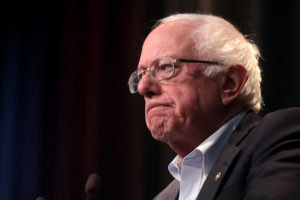When Trust and Media Were One
The greatest sorrow in marking Walter Cronkite's death is the necessity of acknowledging that we have replaced his work ethic and wisdom with puffery and ideological pontification.That’s not the way it is — not now, and not for a long time. Remembering Walter Cronkite means recalling when there really was a media figure who was “the most trusted man in America.” In moments of profound national tragedy and unparalleled triumph, the country turned its eyes toward Cronkite, who unfailingly delivered professionalism and integrity.
The greatest sorrow in marking Cronkite’s death is the necessity of acknowledging that we have replaced his work ethic and wisdom with puffery and ideological pontification.
To watch the tapes of Cronkite’s extraordinary coverage of John F. Kennedy’s assassination — not that final, teary moment when he removes his thick-rimmed glasses to announce that the young president is dead, but the bulletins leading inexorably up to it — is to understand what broadcast news once was, and is no more.
Though it is apparent that the president probably has been killed, Cronkite never goes beyond the sparse facts as they stream into CBS News from wire services and then from reporters at the local affiliate in Dallas. Cronkite tells us that “first reports” are that the president has been “seriously wounded by this shooting.” He says Kennedy has been taken to Parkland Memorial Hospital, where his condition is “yet unknown.”
We learn that two priests were called to the president’s room and that “blood transfusions are being given to President Kennedy.” After Eddie Barker of KRLD in Dallas reports that rumors are emanating from the hospital that Kennedy already has died, Cronkite notes that the account is “totally unconfirmed, apparently, as yet.” And so it went, up until that moment when Cronkite soberly announced receipt of “the flash, apparently official,” that Kennedy had died at 1 p.m., Central Standard Time.
The sequence is devoid of speculation, let alone the self-importance so central to cable television — the contemporary equivalent of the news bulletin of 1963. Applying the standards of today, what, precisely, would an army of experts, academics, political “analysts,” supposedly longtime family friends or others have speculated about on Nov. 22, 1963?
They could not have foretold that within a few years of JFK’s assassination, the very boulevards of downtown Washington that provided the solemn backdrop for his funeral cortege would be ablaze with urban riots. No one could have guessed that Lyndon Johnson’s assumption of the presidency would eventually lead to the tragic escalation of the Vietnam War and the rending of the nation into ideological camps — divisions that foreshadowed the red state/blue state shouting match that dominates political discussion and too much media coverage today.
“When you talked to Walter, he would always want to accentuate the serious side, that news should not be personified. It’s serious grist that makes democracy possible,” says Craig Allen, an associate professor of journalism and author of books on broadcast news history, who worked alongside the retired anchor at the Walter Cronkite School of Journalism and Mass Communication at Arizona State University.
Though Cronkite in retirement repeatedly warned of the perils of a fragmented, ideological approach to news, his advice has been ignored by media figures — and media consumers — alike. During last year’s presidential campaign, those who said they got most of their election news from television relied heavily on channels offering a partisan or ideological cast. According to the Pew Internet and American Life Project, more than a third of those who got election reports mainly from television watched the conservative-leaning Fox News (25 percent) or MSNBC (10 percent), which developed a clear left-leaning tilt.
When potential voters turn directly to the Internet for information, there is an even more intense search for self-satisfying bias. Fully 33 percent of those who went online to get political news last year sought information from sites that “share my point of view,” the Pew study shows. That’s up from 26 percent in 2004. The biggest change came among the young, with the share of those 18 to 24 years old saying they got political news from online sites that reflected their viewpoint jumping to 43 percent in 2008, up from 22 percent in 2004.
This generation was not yet born when Cronkite signed off from “The CBS Evening News” in 1981. It has never known an era in which news coverage could unify and not divide.
Yet it isn’t enough to celebrate Cronkite’s career and mourn the decline of professionalism in journalism. For all those who complain of “media bias,” his death provides an opportunity for introspection among the very viewers who drive it to new heights.
Marie Cocco’s e-mail address is mariecocco(at)washpost.com.
© 2009, Washington Post Writers Group
Your support matters…Independent journalism is under threat and overshadowed by heavily funded mainstream media.
You can help level the playing field. Become a member.
Your tax-deductible contribution keeps us digging beneath the headlines to give you thought-provoking, investigative reporting and analysis that unearths what's really happening- without compromise.
Give today to support our courageous, independent journalists.






You need to be a supporter to comment.
There are currently no responses to this article.
Be the first to respond.